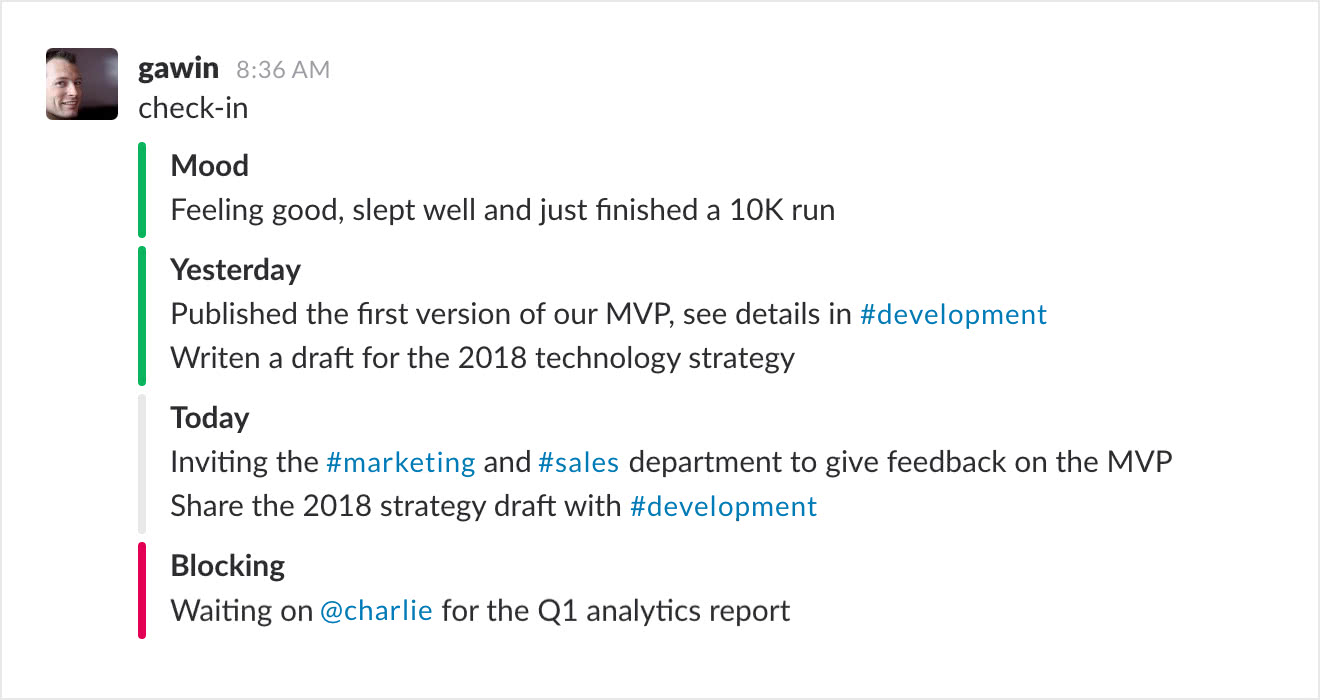Improving Team Empathy
Asking one simple question every day
Empathy, which means understanding what others feel, and attunement, which means understanding what others are thinking, play an essential role in team communication. Although both empathy and attunement have a significant impact on team performance, they are often undervalued. Introducing a safe environment to share feelings enables teams not only to put things into a better perspective but also creates room for team members to feel understood and valued. Empathy is especially difficult for teams working asynchronous or remote, where things like the tone of voice and body language are often left out or misunderstood (for example, in text messages).
Work is work, and your private life is… well… private? Even though it is well known that performance is considerably influenced by what happens outside of work, we often hesitate to share our feelings at work. Sometimes because we feel it is inappropriate, but more often because the company culture does not provide space for this. It doesn’t belong at work.
Interestingly enough a lot of effort has been put in improving performance and increasing productivity. When solely focussing on performance metrics we often forget to think about, and even respect, the human side of work. In a traditional office environment signals that something happened with a co-worker are easier picked up than when working asynchronous or remote. Understanding and learning how to deal with these signals can make quite a difference in performance. For example, if a co-worker just has been in an accident, it might be clearly visible. If a co-worker’s grandmother just passed away, that might be harder to see directly, especially when working remote. Events like these, especially emotional events, can affect your focus and performance drastically.
Stand-up meetings
The last decade more companies have adopted a form of daily stand-up meetings often used within teams to get a quick (between 5 to 15 minutes) overview of the current team commitments and potential obstacles.
Usually, these questions are answered:
- What did you do yesterday?
- What are you planning to do today?
- What are things blocking you from achieving your goal?
When working asynchronously, especially with globally distributed remote teams, having a daily (video) meeting can be a challenge. Instead of having a daily face-to-face meeting, the stand-up meeting is often moved to check-in via chat messages, for example, on Slack.
Stimulating empathy
While these three questions above can give insights on what everybody did and is planning to do, it does not answer the question: “How is everybody doing?” The typical “good morning, how are you?” greeting in the office is often skipped as people dive straight into work, especially if there is a high pressure to finish today’s deadlines. In the long run, this might lead to a social disconnect between co-workers, the feeling that co-workers do not understand you or take your situation into account. By starting the day with a question about you personally, you can stimulate communication and mutual understanding while improving transparency.
How are you?
Fortunately, we can ask a straightforward question:
- What is your current mood, how do you feel?
Even though this might feel strange and even a bit uncomfortable in the beginning, as everybody shares this, it will become more natural over time. When asking this question via messages, for example, within Slack, it allows people the opportunity to think before they write. Especially when dealing with feelings, it might be difficult for some to express themselves. Remember that not all teams (including their leadership) are ready to share their feelings; please take that into account.

How to start?
As long as there is mutual respect, and people feel safe to share their feelings, your team can directly benefit from this. Start simple to build trust. If your team is not used to share feelings and especially if there are trust issues, then you should first address these issues. A good leader will recognize these issues and work together to resolve these. If there are issues with the leader than a trusted third-party, for example, someone from HR or an external coach can be used to help to resolve any challenges.
At the end of the day, we are all human.
